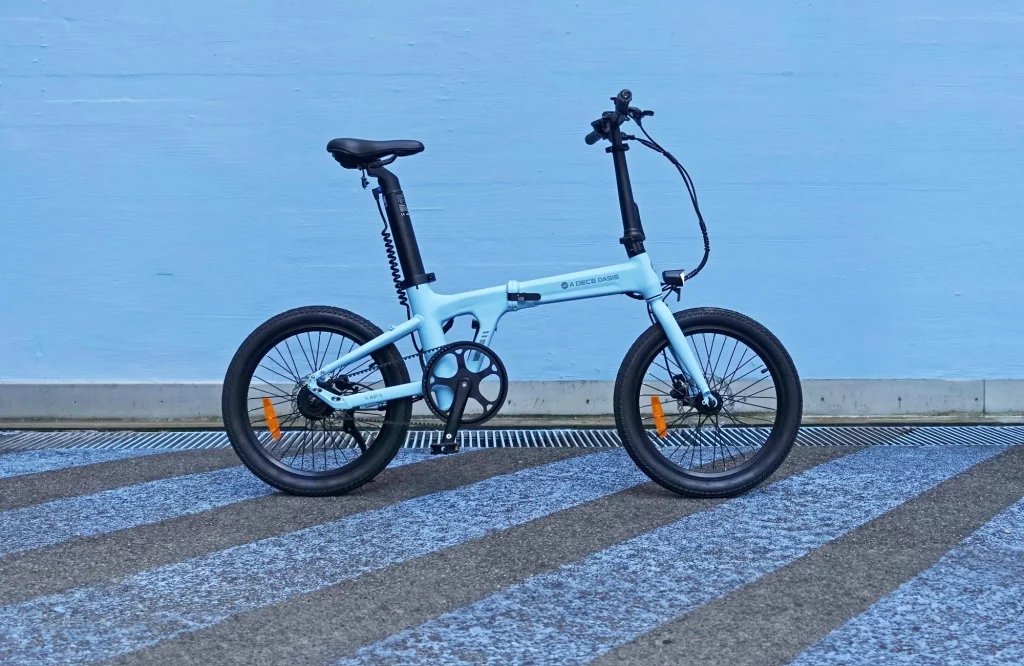Growth in Compact, Electric Bike Designs
As cities around the world continue to wrestle with traffic congestion, pollution, and the ever-growing need for sustainable commuting options, foldable e-bikes are quietly emerging as an innovative solution that combines portability with eco-friendly travel. These sleek, compact electric bicycles have evolved from niche gadgets into serious players in the urban mobility landscape. The global market for foldable e-bikes has seen significant growth over the past five years, driven by rapid urbanization, rising fuel costs, and increasing environmental awareness. Brands like Brompton, Gocycle, Tern, and Fiido have carved out a space by offering lightweight, high-performance foldables that don’t compromise on power. With lithium-ion batteries becoming more compact and efficient, and frame designs getting smarter with every model, the days when foldable bikes were slow and clunky are long gone. Modern foldables often feature integrated pedal-assist systems, smartphone connectivity, and innovative folding mechanisms that allow commuters to stow their bike under a desk or carry it on public transport with ease. This shift has made them ideal for multi-modal commuting—a key factor in rethinking urban transit.
Trends in Urban Commuting Preferences
The modern commuter is increasingly tech-savvy, sustainability-conscious, and space-restricted. Especially in densely populated cities like Tokyo, Paris, New York, and Shanghai, owning a traditional car has become more burden than benefit. Foldable e-bikes offer a practical compromise between cycling freedom and compact utility. Recent commuter trend surveys show a growing preference for e-mobility solutions that can “adapt to the city,” and foldables do just that. They give riders the flexibility to cycle part of the way and hop on a train or bus without the logistical hassle of storing a full-sized bike. Governments are also beginning to take note. In countries like the Netherlands, Germany, and even the U.S., subsidies for electric bike purchases are expanding to include foldable models. Additionally, employers in tech hubs and creative industries are starting to provide facilities—like charging stations and storage lockers—that support e-bike commuting. The pandemic-era shift to more flexible work hours has also reduced peak traffic patterns, creating room for alternative commute models like cycling, especially for short- to mid-range urban travel. These developments point toward a reshaping of how we move through cities.
The Appeal to a Diverse User Base
Foldable e-bikes are not just appealing to young professionals or hardcore cyclists. They are increasingly gaining traction among older adults looking for a lower-impact way to stay active, as well as women who value the safety of being able to ride and fold up their bike when needed, avoiding concerns around theft or nighttime visibility. Many new models weigh under 20kg and include step-through frames, customizable gear settings, and app-based diagnostics that make them easy to operate regardless of prior cycling experience. For businesses, especially delivery companies, foldable e-bikes are becoming tools of efficiency. In congested urban zones where trucks struggle to navigate or park, a compact electric bike offers a faster and greener way to complete last-mile deliveries. Logistics startups in Europe and Asia are already piloting foldable e-bike fleets equipped with cargo compartments and GPS routing.

Design Innovation and Limitations
While foldable e-bikes offer impressive flexibility, they still face a few challenges. Compact designs often lead to trade-offs in battery capacity, tire size, and ride comfort on bumpy roads. However, recent innovations are addressing these concerns head-on. Engineers are working on dual-suspension systems, wider tires for urban terrain, and smart folding designs that don’t compromise the structural integrity of the bike. Models like the Gocycle G4i+ now feature torque sensors, carbon fiber components, and advanced locking systems that rival even mid-range traditional e-bikes in both power and durability. There’s also a rising trend in modular design—bikes with removable battery packs, interchangeable parts, and built-in power banks that let riders charge devices on the go. These enhancements suggest that the foldable e-bike segment is not merely following trends but driving them.
Environmental and Urban Planning Impact
From an environmental perspective, foldable e-bikes contribute to a city’s carbon reduction goals by replacing short car trips, which are among the least efficient and most polluting. Urban planners are beginning to factor e-bike usage into their transport ecosystem models, allocating more funds for shared bike lanes, pop-up parking docks, and micro-mobility hubs. Some cities, such as Copenhagen and Singapore, are even developing “bike highways” where compact, lightweight electric vehicles like foldable e-bikes are prioritized. This could lead to a restructuring of urban traffic flows, easing congestion not just for cyclists but for everyone on the road. The scalability of these solutions also makes them attractive: a single parking space can accommodate up to ten foldable bikes. In densely built environments, that’s an infrastructure revolution waiting to happen.
Conclusion: A True Solution or a Temporary Trend?
So, are foldable e-bikes the answer to urban congestion? While they may not be the only solution, they certainly check many boxes: emission-free, portable, tech-integrated, and increasingly stylish. Their growth trajectory suggests staying power, especially as battery tech and urban policies continue to evolve in their favor. The real question may not be whether they can solve congestion alone, but rather whether cities are ready to adapt their infrastructure, regulation, and commuter culture to fully embrace their potential. In this context, foldable e-bikes might not just be a reaction to modern mobility problems—they could be the blueprint for the future of city commuting.







































Discussion about this post